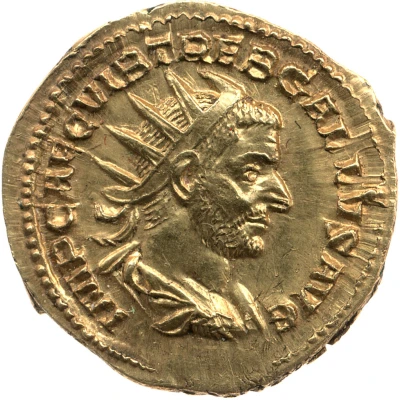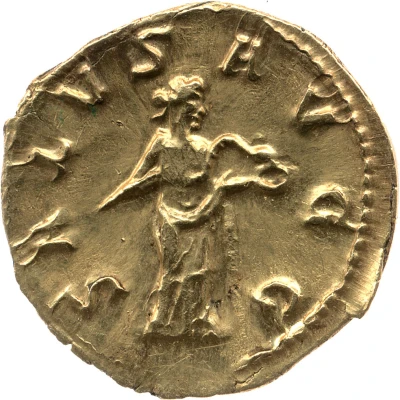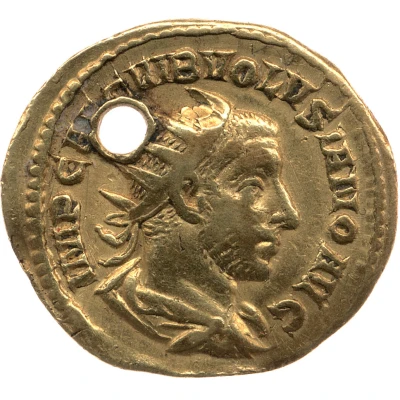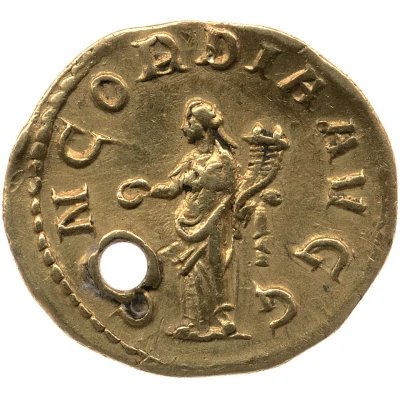Double Aureus "Binio" - Volusianus AEQVITAS AVGG; Aequitas
| Gold | - | - |
| Issuer | Rome › Roman Empire (27 BC - 395 AD) |
|---|---|
| Emperor | Volusianus (Gaius Vibius Volusianus) (251-253) Trebonianus Gallus (Gaius Vibius Afinius Trebonianus Gallus) (251-253) |
| Type | Standard circulation coin |
| Years | 251-253 |
| Value | 2 Aurei (25) |
| Currency | Antoninianus, Reform of Caracalla (AD 215 – 301) |
| Composition | Gold |
| Shape | Round (irregular) |
| Technique | Hammered |
| Demonetized | Yes |
| Updated | 2024-10-05 |
| Numista | N#284013 |
|---|---|
| Rarity index | 100% |
Reverse
Aequitas, draped, standing left, holding scales in right hand and cornucopiae in left hand.
Script: Latin
Lettering: AEQVITAS AVGG
Translation:
Aequitas Duorum Augustorum.
Equity of the two emperors.
Comment
Source:Online Coins of the Roman Empire (OCRE)
Interesting fact
The Double Aureus "Binio" - Volusianus coin was minted during the reign of Emperor Volusianus, who ruled the Roman Empire from 251 to 253 AD. The coin's design features the image of the goddess Aequitas, or Equity, on the obverse, and the emperor's name and title on the reverse. The coin was made of gold, which was a valuable and prestigious metal at the time, and its high denomination made it a symbol of wealth and power. Interestingly, the Double Aureus "Binio" - Volusianus coin was part of a larger currency reform implemented by Volusianus, who introduced a new currency system to address the inflation and economic challenges faced by the Roman Empire during his reign. The reform included the introduction of a new gold coin, the aureus, which replaced the earlier gold coin, the solidus, and the Double Aureus "Binio" - Volusianus coin was one of the denominations of the aureus. Overall, the Double Aureus "Binio" - Volusianus coin is a fascinating piece of history that provides insight into the economic and political developments of the Roman Empire during the 3rd century AD.



